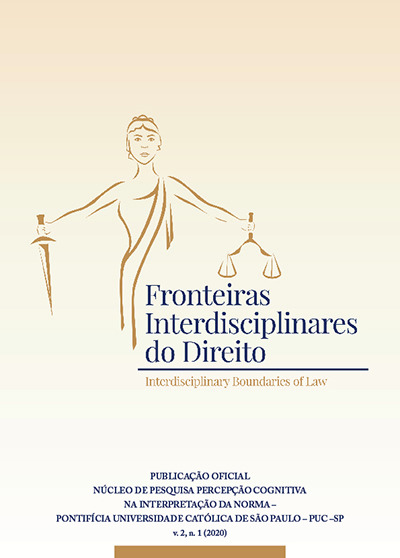NEUROCIENTIFIC DISCOVERIES: CORRELATION BETWEEN BRAIN INJURIES AND COMMITMENT OF CRIMES AND THEIR CONSEQUENCES IN THE DEMOCRATIC STATE OF LAW AND CRIMINAL PROCESS
Keywords:
NEUROSCIENCE, LAW, CRIMINAL PROCEDURE, MENTAL-HEALTHAbstract
The objective of this scientific research was to review studies that analyzed the historical trajectory of mental health in Brazil, as well as the relevance and impact of neuroscience studies for humanistic matters of law and its consequent application to criminal proceedings.
Currently, there are few studies that discuss the influence of brain functioning on crimes.
Therefore, it is important to describe that this deficiency may be present in individuals who commit crimes. So, the question arises: would the neurological and cognitive deficit be able to make an individual commit a crime?
Most of the studies reviewed here believe that the hypothesis that the individual with a human brain with deficient characteristics may commit crimes is promising.
Given the relevance of these findings, it is necessary to consider the importance of investments in this area and a deeper understanding of the subject. This would contribute to a better sense of justice in the country, as a person who commits a crime, due to a brain malfunction, could have the possibility of a differentiated judgment in relation to those who are in good cognitive and neurological functioning.
In addition, with investment in this research area, there is the possibility of previous diagnoses of these deficits in individuals with a tendency towards psychopathy or acquired sociopathy. In addition, it is important to invest, not only in medical treatments, but also in activities that stimulate cognitive development in terms of empathy, civility, positivity and communication skills. In this way, the individual affected by the damage can develop an improvement in reciprocal social development, thus avoiding an increase in the number of crimes committed due to the low ability of brain functioning.
References
ARCELO, Adalberto Antonio Batista. Propriedade Intelectual. Flávio Henrique Unes Pereira e Maria Tereza Fonseca Dias (Orgs). Cidadania e Inclusão Social – Estudos em Homenagem à Professora Miracy Barbosa de Sousa Gustin. Belo Horizonte, Ed. Fórum, 2008.
BEAR MF, Connors BW, Paradiso MA. Neuroscience: exploring the brain. Philadelphia: Lippincott Williams & Wilkins; 2007. p.4-21, 26-7, 620-24.
BRASIL, Código de Processo Penal. Disponível em: <http://www.planalto.gov.br/ccivil>
BRASIL, Código Penal. Disponível em: http://www.planalto.gov.br/ccivil_03/decreto-lei/Del2848compilado.htm;>
BRASIL, Constituição da República Federativa do Brasil. Disponível em: http://www.planalto.gov.br/ccivil_03/constituicao/constituicao.htm
CAVALCANTI, Rodrigo. Phineas Gage. Super Interessante, 2016. Disponível em: <https://super.abril.com.br/historia/phineas-gage/>.
CEREZO MIR, Jose. Curso de derecho penal español – parte general. Madrid: Tecnos, 2004
CRIADO, Miguel Ángel. As lesões cerebrais dos piores criminosos. El País, 2017. Disponível em: <https://brasil.elpais.com/brasil/2017/12/19/ciencia/1513705212_349792.html>.
DAMASIO H, GRABOWSKI T, FRANK R, GALABURDA AM, DAMASIO AR. The return of Phineas Gage: clues about the brain from the skull of a famous patient [published correction appears in Science 1994 Aug 26;265(5176):1159]. Science. 1994;264(5162):1102-1105 Disponível em: <https://pubmed.ncbi.nlm.nih.gov/8178168/>
DARBYA, R. Ryan, et al. Lesion network localization of criminal behavior. PNAS, PNAS, vol. 115, no. 3, 601–606, 2018. Disponível em: <https://www.pnas.org/content/pnas/115/3/601.full.pdf >
EINSTEIN, Albert. Como vejo o mundo. Ed. Especial, Rio de Janeiro, Nova Fronteira, 2016.
GRACIA MARTÍN, Luis; BOLDOVA PASAMAR, Miguel Ángel; ALASTUEY DOBÓN, Carmen. Tratado de las consecuencias jurídicas del delito. Valencia: Tirant Lo Blanch, 2006.
GRECO, Rogério. Código Penal: comentado / Rogério Greco. – 11. ed. – Niterói, RJ: Impetus, 2017.
HUNGRIA, Nélson. Comentários ao Código Penal: Arts. 11 a 27. 4 ed. Rio de Janeiro: Forense, 1958, v. 1, Tomo 2.
KANDEL, Eric R. et al. Princípios de Neurociências. Ed. 5, Porto Alegre, AMGH, 2014.
MASI, Carlo Velho. Neurociência e Direito Penal: repensando o ‘livre arbítrio’ e capacidade de culpabilidade. Canal Ciências Criminais, 2017. Disponível em: <https://canalcienciascriminais.com.br/neurociencia-direito-penal/>.
MYERS, David, G. Psicologia. Rio de Janeiro, LTC, 2012.
NUCCI, Guilherme de Souza. Curso de Direito Penal: parte geral: arts. 1º a 120 do Código Penal - 3. ed. – Rio de Janeiro: Forense, 2019.
PERES, M. F. T. e NERY FILHO, A. A doença mental no direito penal brasileiro: inimputabilidade, irresponsabilidade, periculosidade e medida de segurança'. História, Ciências, Saúde — Manguinhos, Rio de Janeiro, vol. 9(2):335-55, maio-ago. 2002.
PRADO, Luiz Regis. Curso de Direito Penal Brasileiro – 17. ed. – Rio de Janeiro: Forense, 2019.
SACKS, Oliver. Um antropólogo em Marte: Sete histórias paradoxais. São Paulo, Companhia das Letras, 2006.
SCLIAR, M. História do Conceito de Saúde. PHYSIS: Rev. Saúde Coletiva, Rio de Janeiro, 17(1):29-41, 2007. Disponível em: < https://www.scielo.br/pdf/physis/v17n1/v17n1a03.pdf>
SILVA, Nilson Tadeu Reis Campos, O DIREITO E A SAÚDE MENTAL: ASPECTOS HISTÓRICOS DA TUTELA NO BRASIL E EM PORTUGAL. 2014. Revista da Faculdade de Direito da Universidade de Lisboa, ISSN-e 0870-3116, Vol. 55. Disponível em: < http://www.publicadireito.com.br/artigos/?cod=fb3f76858cb38e5b >
Downloads
Published
How to Cite
Issue
Section
License
Copyright (c) 2020 Maria de Lourdes Guedes Neta, Marcelo Amaral Colpaert Marcochi, Amanda Santalucia Ribeiro

This work is licensed under a Creative Commons Attribution 4.0 International License.


